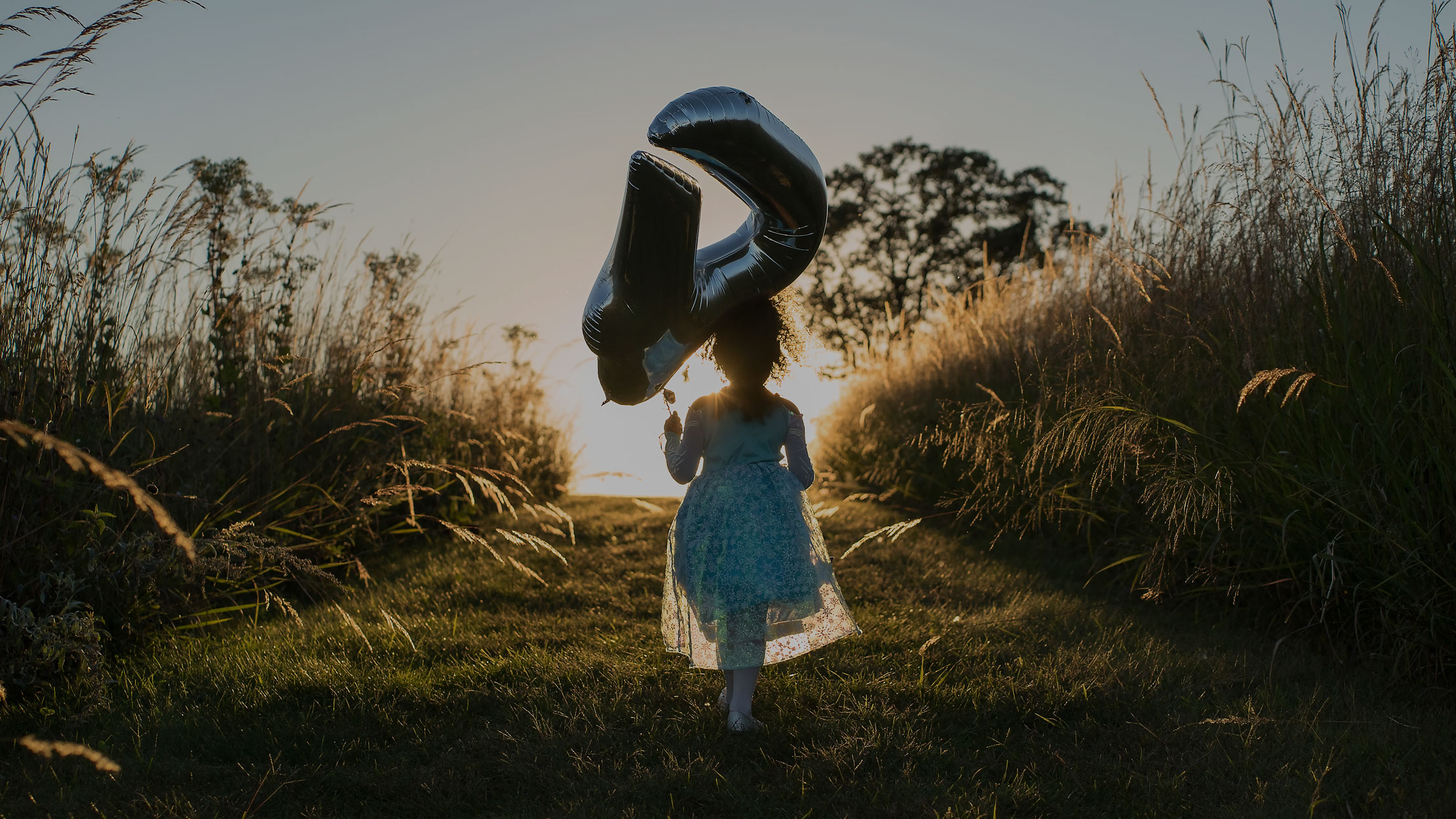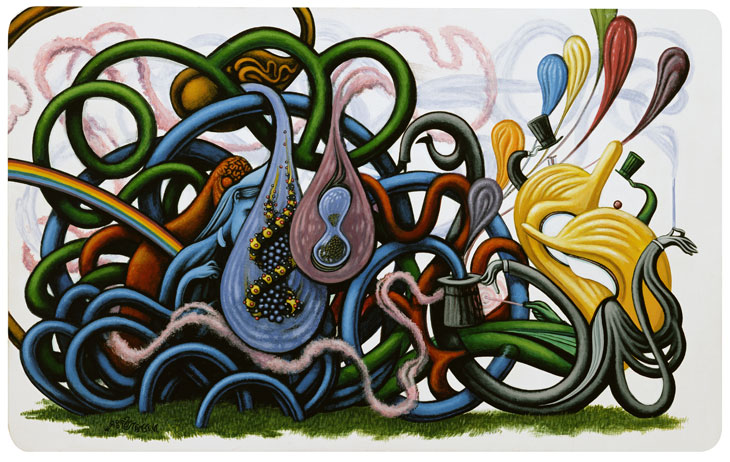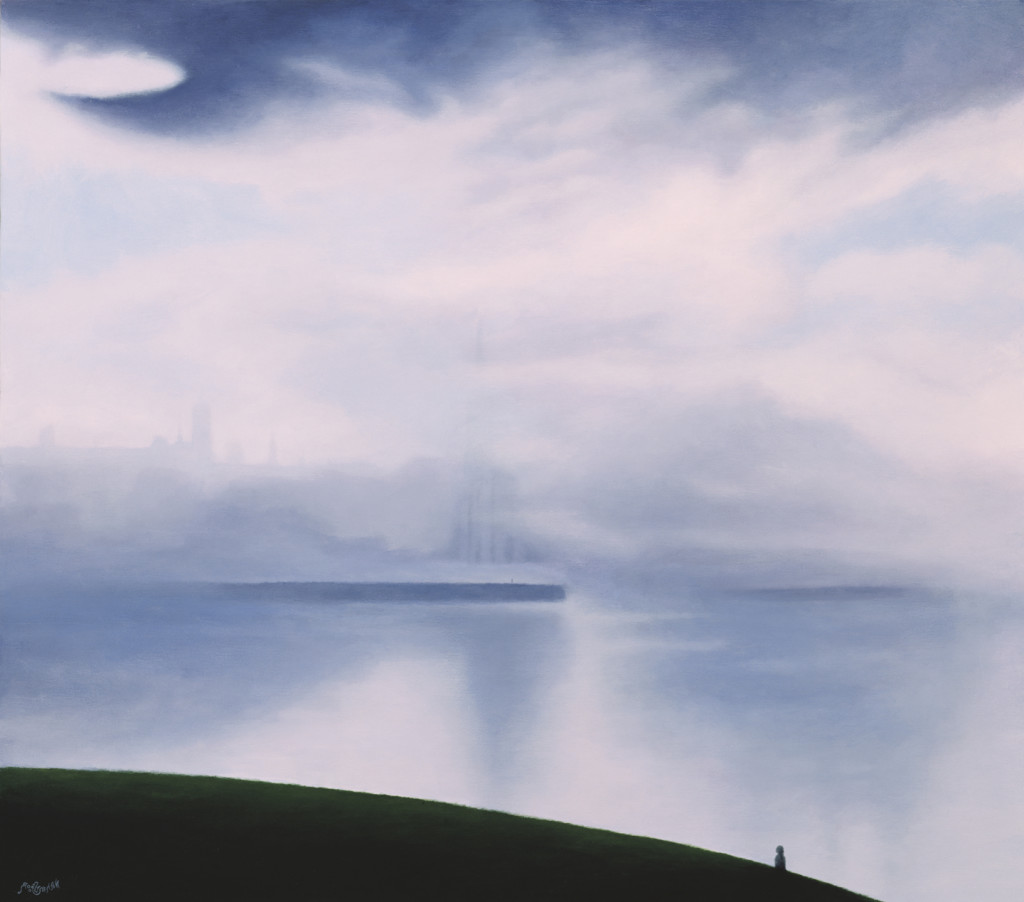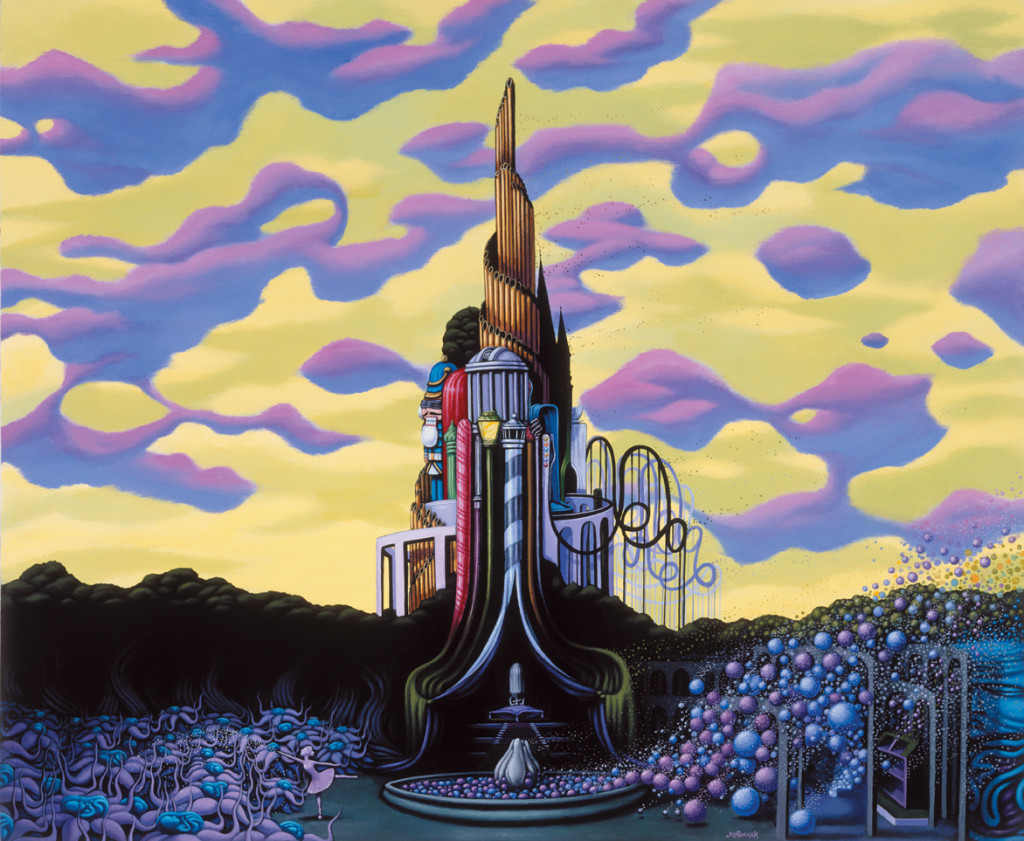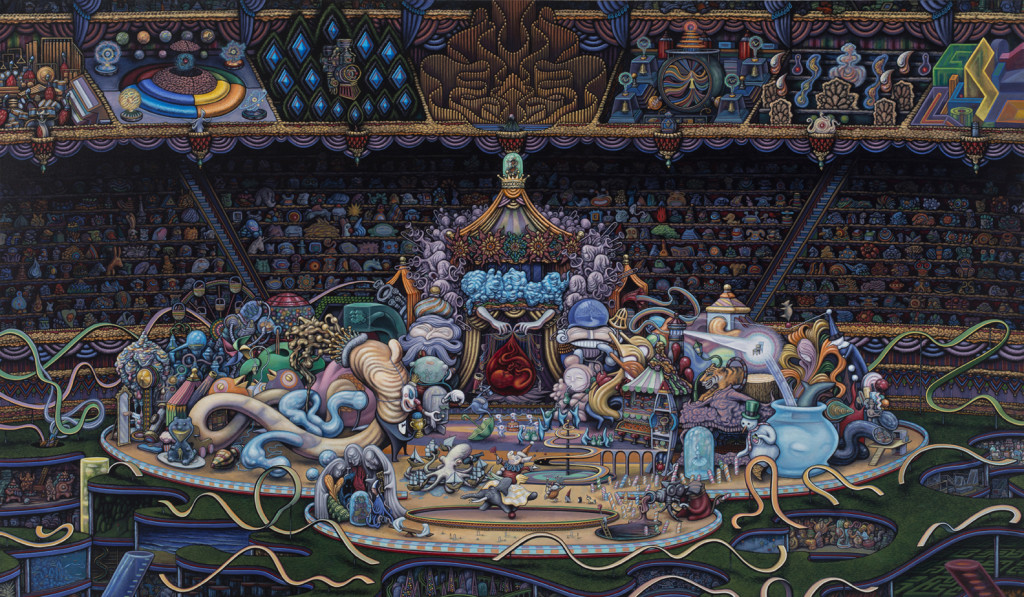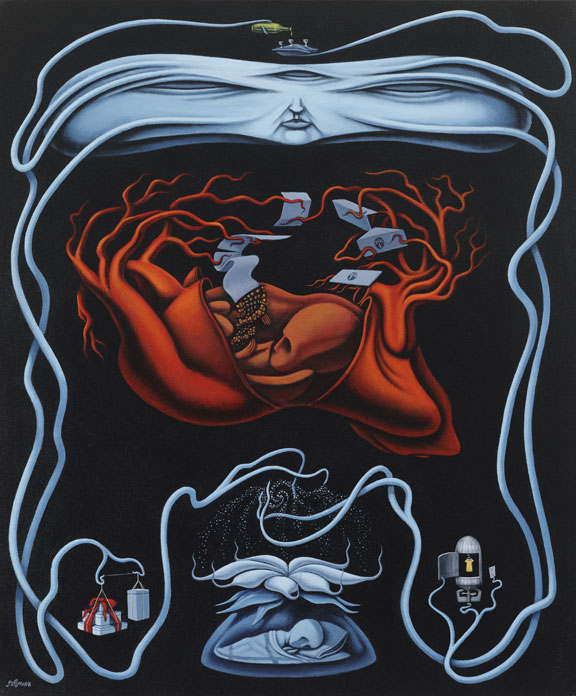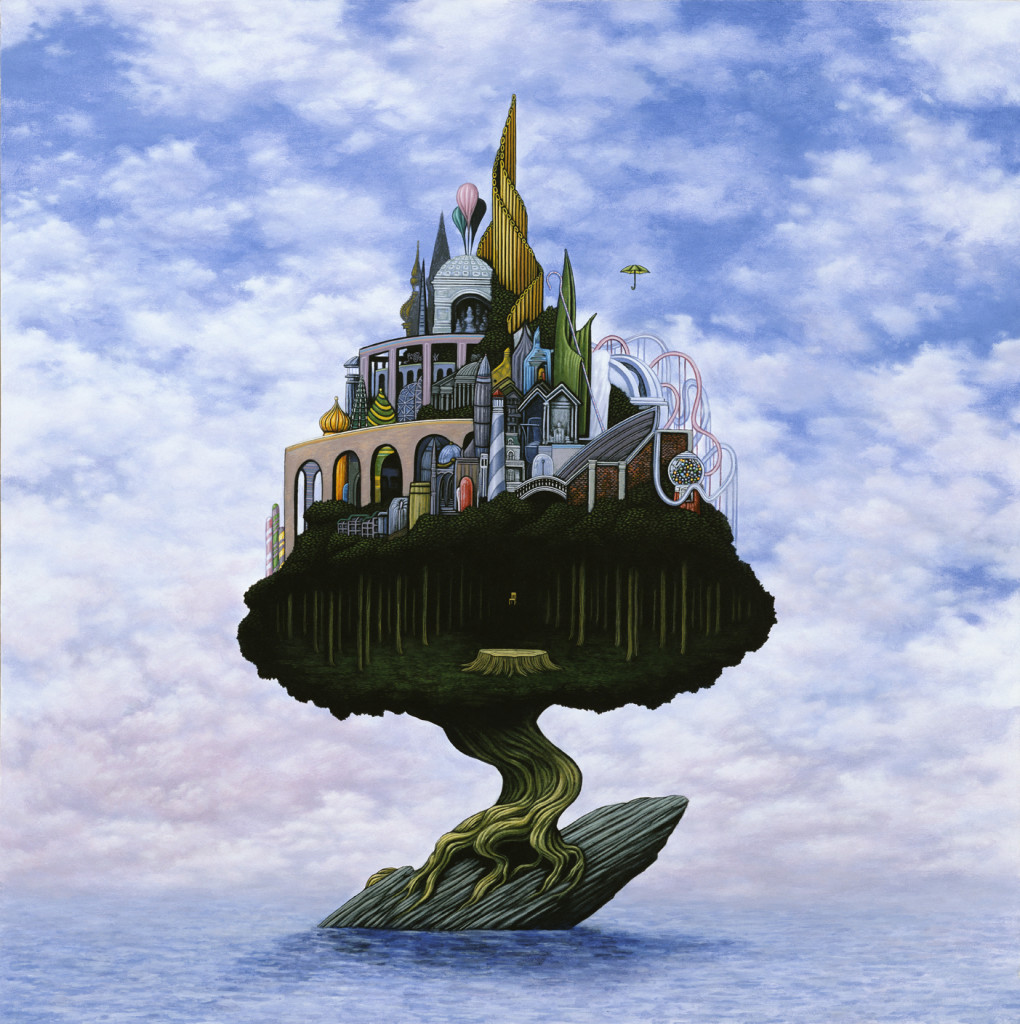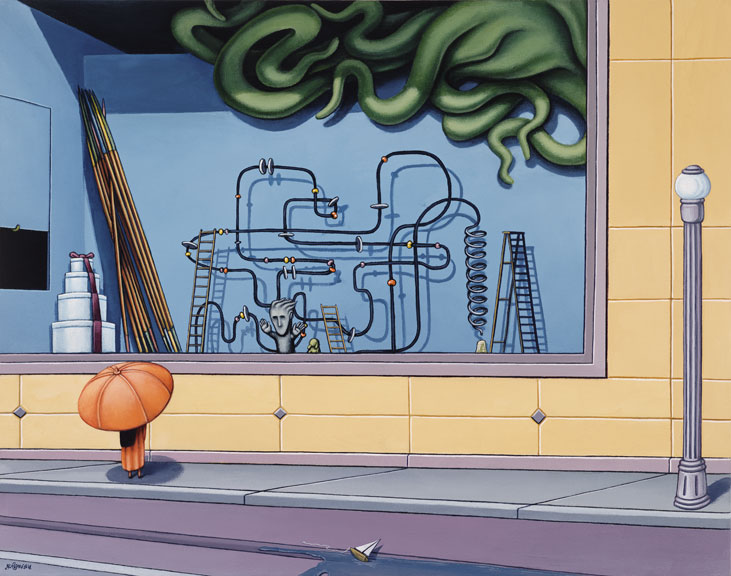Nathan Spoor
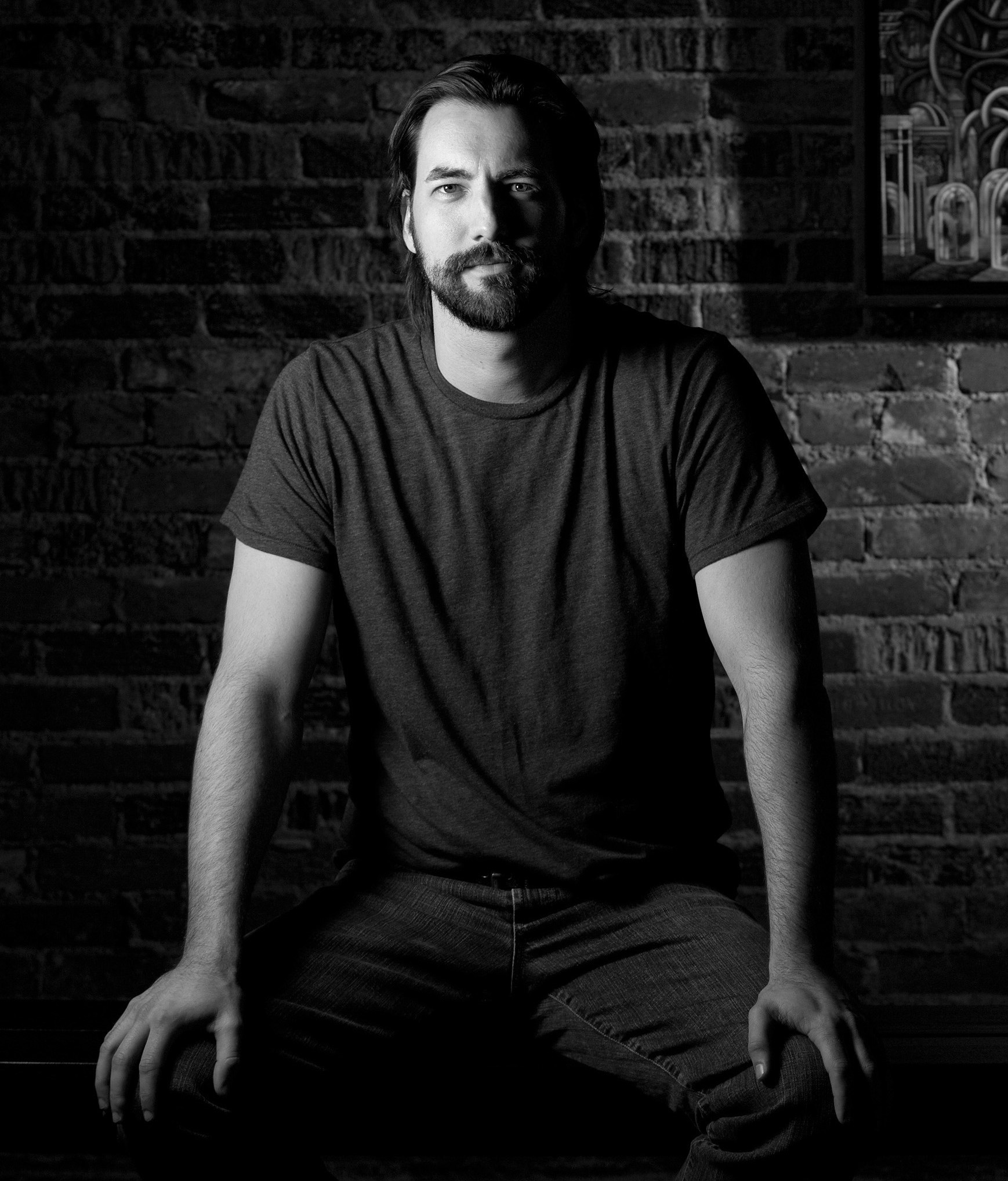
Who are you and what do you do?
My name is Nathan Spoor. I’m an artist, writer and curator, living and working in Los Angeles, CA. For the last several years I’ve been working on an ever-expanding series of paintings called The Intimate Parade. Over the years I’ve also been busy curating art exhibitions, several around the Suggestivism concept that I’ve championed the last few years–more recently a couple big shows for the Long Beach Museum of Art. Recently, I’ve been the full-time Head of Curation for Society6, as well as Producer / Editor for the Society6 Art Quarterly.
So what do I do? Lots. Maybe I’m a creative juggler.
What is your favorite medium?
Is it fair enough to call life a medium? It’s the broadest canvas that I’ve been given to make something out of, or with, or within. When I’m painting I prefer acrylics because they’re low toxicity and dry quickly. So, the possibility of dragging my hands across a painting and smudging something important is minimized.
I also like the medium of interactions, where humans are together in a place discussing ideas and coming up with solutions to various hypotheses. Life is so interactive, and just like painting, I find that when I’m a good listener I’m gifted with options or solutions that I might overlook if I’m trying to push my ego into the equation.
Where do you draw your inspiration from?
Man, I think that’s a life thing again. It might just all come back to how you approach your day and what your intentions are – “it” being the result that one is seeking or the meaning that so many of us are longing for. There’s also a lot to be said about allowing ideas to appear in front of us, or appear out of need when the moment is right. So, perhaps I’m saying that my own inspiration comes to me as a gift that is presented, but that I also have to be open to it arriving. Or that I really need to be available to hearing or seeing a good idea when it comes around, because a lot of the time the best ideas kind of whisper and hang out close by and see if I’m really ready to take on something substantial. And let’s be honest, sometimes the best ideas are those “eureka” moments when the universe just opens up and everything converges in one brilliant concise thought.
Did I even answer your question? You wanted me to be honest, so I’m just opening up the doors and we’ll see what comes out. Hah. My inspiration is one of those things that helped me start trying to coin a term that could contain the process that I approach my art with – suggestivism. It’s a term that I’ve been using to describe that natural state of acceptance between an individual that is curious to convey something, and the unique way that the universe projects an answer into their life. Suggestivism is unique to each person, but in my opinion it can be described as a visual evidence of an artist’s heightened need to communicate and convey messages.
What is your creative process?
I wish there was a way to just box that up as an understanding and package it neatly for everyone to consume. I can describe some of the things that I go through to paint, or to write, or some of the times that I feel the most inspired or creative. But, it’s difficult to really put the creative process into words.
The creative process is very much an integral part of my being, it’s something connected to the fabric of the universe and what I create is some kind of imprint or fingerprint that takes a visual form. I mean, even this mechanism of allowing thoughts to appear as words is a part of the process. The mind opens up in some way and ideas start pouring out. Right now we’re sharing words and hopefully those are connecting with ideas or inspirations that will ignite some interest or need to create. That’s a creative process, but it’s just a starting point.
Maybe the creative process can be identified by an individual’s willingness to continue, to constantly seek new perspectives, new answers or solutions to whatever artistic interests we are pursuing. And that statement accepts that there are obstacles, crazy stopgaps that plague every person and especially people that are concentrating fully on producing creative output. That statement also invokes the presumption that we are all in pursuit of something, which I believe we all are. We’re all trying to create something new, vivid, insightful, useful, entertaining and altogether engaging point of departure. Departure, you might ask, how so? Because as artists we’re producing a moment of inclusiveness, however you look at it. We want to be included in that magical moment when the idea transforms through us into something physical. We want to share that with others. That moment of sharing brings people in and hopefully initiates a spark of thought that can be distributed or carried away; something that can grow into a larger conversation or a moment for another time.
Is there a specific theme/message/emotion you aim to evoke?
I’d have to say that my pursuit has largely been attempting to capture viewer’s attention using elements of optic revelry within moments of mystery.
What motivates you to continue to create?
It’s difficult to really pinpoint just one thing that motivates me to create or to keep on with the work. It’s a combination of things combined through living life–magnify that through my persona and I think you just come out with a person that has a need to create. There’s some innate responsibility that I feel to myself, some internal pull to do this. I don’t really know how else to try to describe it. I do get discouraged, but I don’t stop. I take time to step back and analyze or absorb the moment and decide what steps to take next. I don’t think I have it in me to stop, or to quit. Really driven and ambitious people don’t have “quit” in them. They do have the ability to negotiate with themselves and find new ways to be successful though.
One of the things that really drives me onward is the curiosity to find out more – about the technique of painting, of thinking, portraying a moment or getting my feet, or hopefully my whole self into the big river of consciousness (whatever you choose to call it).
When you encounter creative blocks, what do you do to overcome them?
The short answer is I take a break. I let it breathe so to speak. I’ve learned that this is the best path over time, but let me tell you I didn’t start out that way. I used to subscribe to the “power through” mentality. This is essentially a work strategy where you just keep working until it all makes sense – but it didn’t. What I ended up with was more frustration, mostly due to the fact that I had to redo whatever I thought I was fixing by just staying engaged. And that was hours of work invested in a mess that needed to be reworked or scratched and started from the canvas level again.
So I then found that working on several ideas at once, different canvases, was very useful. I could have multiple paintings going at one time and just bounce around. When I got fatigued on one, I could quickly switch it out for another. Then I had a fresh approach to that next painting. My mind would be working on that other piece in the background, just as it was working on every idea and painting that I had going at the same time. The mind is a very interesting machine, tool, whatever you choose to see it as.
I took this approach of giving things room to breathe a step further when I began sketches for new works. I learned that if I start a new drawing each time I sit down to work on an idea, that I essentially gave that idea more space for new ideas to creep in. So each drawing session I get out a new piece of paper and draw out a painting idea, and things would be less burdened with the previous expectations for the concept. It was also more fun. And as I worked out the ideas on paper I was also saving tons of time on the easel. It might seem laborious, but the time it takes to make a drawing is a fraction of the time it takes to apply numerous layers of paint to a piece – let alone if you have to stop and begin again if the painting isn’t working out for whatever reason.
Other ways to loosen creative blocks are simple things like: taking a walk, getting fresh air, having a meal, taking a nap, getting a good night’s sleep. A lot of ideas come to me in restful moments. I think this is because my mind is working on the ideas in the background, and when I’m not trying to force the issue the idea is free to take shape and form properly. The creative process is also about having fun, about discovering new things and surprising yourself. So make sure that you give yourself the opportunity to be free and to let those new ideas in.
What are your thoughts on the future of art?
Part of me says, why would I worry about it? Art can take care of itself. Inspiration finds those who are ready and willing. The future of Art is probably going to look a lot like it always has – great minds are going to rise to the occasion, and mediocre talents are also going to be celebrated. And the parts we don’t ever know are going to exist too. I’ve seen some amazing artists that never seek out public acknowledgement, and it really stuck with me that someone would be that good and not try to show anyone. But, that’s because I’m the kind of person that was seeking that attention and acknowledgement. I hadn’t reached the place where I understood the importance of just creating for myself. I’m starting to be more in touch with that more as I grow though. Oh, the future of Art? Or art in lower case? Who cares. We won’t be here to see any of it.
What is something you have had to learn on your own that you would like to pass on to the next Creative?
Oh man, there’s so much that I get asked constantly either at shows or in emails, and I’ve saved tons of the best and most asked questions. Most of those questions revolve around “how can I get to the next stage quicker?” or something of that nature. The real answer is so simple: Do the work. Get down in it and take the time to perfect your craft, understand your way of creative speaking, whatever that is. Put in the hours, all of them. Then find ways to learn from others by watching, listening, take negative feedback and rejection as opportunities to learn and grow.
Young artists don’t need to be well known immediately. Enjoy the path and build the character you don’t even know you’re building; that’s life, and you really only have these short moments in front of you right now to “be”. Enjoy those around you. And if those around you are assholes, find better people. Create the life that helps you grow and feel involved and valued. It’s not a fast thing, and often it’s not the easy thing. But it’s life. It’s your life. You’re an important part of this thing, whatever it all really is. So don’t waste your time worrying about the people that don’t get you or can’t sync up with what you’re imagining.
What I’ve learned or what someone else has lived won’t always be the same lesson that will mean something to someone else, but the things I’ve had to learn on my own have made me who I am and I really appreciate those things (mostly in hindsight).
I’d say just don’t be afraid or nervous to be the person you need to be, or to pursue the long play for your creative needs. Let’s be honest, you have to find a way to support yourself. So, be ready to feed your creative life in ways other than selling your art. But don’t give up. Even when it seems like no one else believes in you, someone out there likes what you do. Something about this mysterious universe believes in you. The world needs you to live up to your potential. Otherwise what are we doing here?
